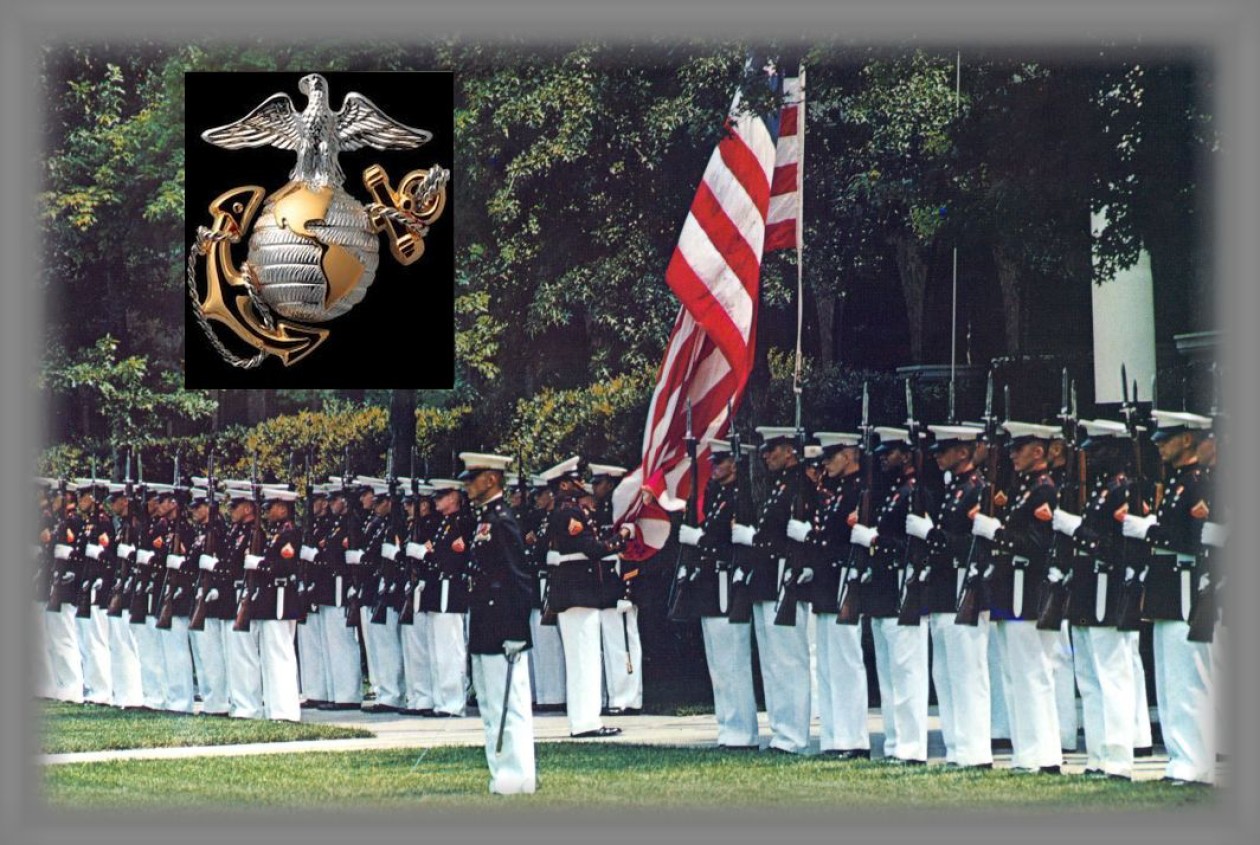We’ve got a whale of a book to recommend to all you gung-ho leathernecks. Colonel Jim Bathurst’s huge memoir is truly a treat to read and consider. In fact, I enjoyed reading every page of this fully packed professional, yet very personal narrative. Bathurst rose from a high school dropout and Marine boot to the exalted rank of gunnery sergeant before gaining his commission as an officer of Marines. His story will speak strongly to each and every Marine.
Marine General Peter Pace, the 16th Chairman of the Joint Chiefs of Staff, noted in a dust-jacket comment, “Reading Jim’s book is like coming home!” And Gen Pace, I fully agree!
Initially, this wide-eyed boot set his cover on becoming a first-class Marine “gunny,” the early role models he admired most. Joining in 1958, he quickly adapted to the ways and ethos of his beloved Corps.
To young Bathurst, the Corps was not only a career, but a way of life. Starting off as a communicator, he continually sought assignment to the infantry field. His first overseas duty assignment was at Marine Barracks Yokosuka, Japan, where he spent his tour in a picture-perfect guard section. This formative experience would serve him well throughout his career. By 1962, the young corporal donned our Corps’ distinctive campaign hat and took to the field at Parris Island as a Marine drill instructor.
In early 1966, he arrived in Vietnam. Now an 0311 “grunt,” he joined Company E, 2d Battalion, First Marine Regiment north of Da Nang. Active patrolling, avoiding booby traps, and ducking Viet Cong snipers were the names of the deadly game in “Indian Country.” For most of his combat tour, Sgt Bathurst, or “Sgt B,” as the troops called him, in effect, served as their platoon leader. His stalwart actions in I Corps earned him a Silver Star, a Bronze Star with combat “V,” and the award he did not wish to earn, the Purple Heart. There, his actions and instincts fully demonstrated he was a capable leader of Marines in combat.
Upon returning to “the world,” he was tapped to join the leathernecks at Marine Barracks Washington, D.C., the “oldest post of the Corps,” steeped in the Corps’ time-honored history and tradition. It was there that Jim was promoted to his long-sought grade of gunnery sergeant. But soon, his previously hard-won field combat commission came through. The newly promoted Mustang was awarded his gold bar and commenced a new and exciting part of his storied career.
Wise beyond his years, he excelled in each of his new and challenging assignments. Over the years as he gained promotions, he became known as an expert problem solver.
As a major, he turned around the sagging reputation of the Marine Barracks located at Naval Air Station Lemoore, Calif. The turnaround was so successful that the base was written up in a “Post of the Corps” article in the August 1981 Leatherneck magazine. By the end of his three-year tour, the IG inspection of the base, now considered unnecessary, was canceled. Maj Bathurst proudly wrote: “They were actually going to skip us, something I had never heard of happening throughout my career.”
Before being promoted to lieutenant colonel, Bathurst was assigned to square away the drooping morale and production in Recruiting Station Chicago in the 9th Marine Corps District. Using long-tested leadership experience, RS Chicago was transformed into a star recruiting area and rated as the top RS in the district for 19 straight months.
Rewarded with top-level school at the Naval War College, LtCol Bathurst received his master’s degree in national defense and strategic studies. Then he achieved the dream of any hard-charging Marine officer – battalion command. LtCol Bathurst took command of 2d Bn, 6th Marines. The battalion was special with a reputation rooted in World War II, when it was known as “Huxley’s Harlots,” and highlighted in the Leon Uris novel, “Battle Cry,” and the movie, “Battle Cry.”
Promoted to colonel, he was sent to Landing Force Training Command Atlantic in Norfolk, Va. There, he developed a riverine fast-attack assault boat capability for the Corps. As you might expect, this caused nervousness within the local East Coast SEAL command, and Bathurst pulls no punches in his descriptive dialog about the assignment.
Upon retirement in 1993, Col Jim Bathurst settled in Montana. During the winter months, he trekked to warmer cl mes where he had ample opportunity to reflect on his time as a Marine.
In summarizing his life and career. Jim Bathurst says it best: “[T]he Corps was not a job, a career, or even a profession; it was – and still is – a way of life.”
This grand tome is a sparkling tribute to the life and times of an “Always Faithful” Marine’s Marine, it’s jam-packed with significant lessons for leaders. The book keeps the leatherneck book lover focused on our Corps’ values, history, and traditions.
When finished, I simply hated putting this electrically charged book down. Indeed, it was the best military memoir I’ve ever read. Thank you, sir. For a brief moment in time, I felt young again.
Robert B. Loring
Originally posted 2015-10-19 15:38:06.

